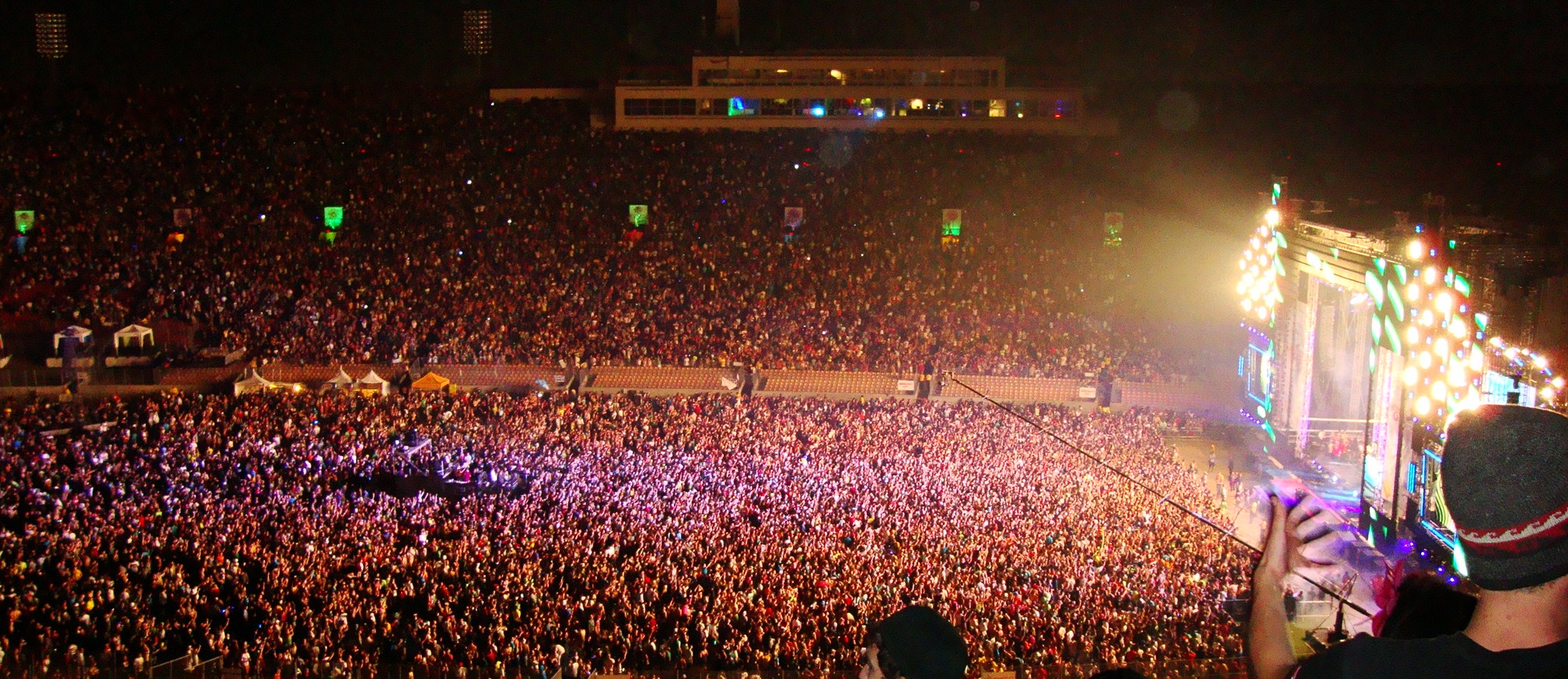Wubs Going On

Electric Zoo is coming up this week and 90% of the people there will be bobbing around like they drank too much caffeine at the most fun middle school dance in history, but just because everyone at Woodstock was on LSD doesn’t make the cultural legacy of rock and roll any less significant. For north of $100 a day to attend a modern EDM mega festival cum super rave, the music must offer something.
The uninitiated to these phenomena should imagine three hundred consecutive Harlem Shake videos mixed with the party in Zion from the Matrix1. The whole thing is science fiction. You can’t quite believe a place like this exists, but the Richter-scale bass is incessantly proving otherwise. One, two, three, four. Electronic dance march.
What is free will when you have already bought a ticket? The realization that you in fact chose to be at this crazy place forces you into the throng. It’s startling, considering the quasi military setting, that the festivalgoers generally turn out to be spacey optimists, separated from those of previous generations only in their comfort with this particular setting: the cyborg overlords have mandated dancing, and it will be good.
The noises (you can call them instruments) of EDM are central to this fantasy. One song dictates that the listener “say hello to the robots,” and the music makes good on its promise; the voice is the one it is talking about. But robots do more than talk: they dance.
The structure of your typical wubby festival EDM is simple2, but the reasoning behind it is very different from that used in other genres. EDM recognizes and is organized by the tiredness of the listener. Even the hardiest and most inebriated are hard pressed to boogie nonstop for ten straight hours, so EDM has provided them with the musical equivalent of interval training. The scale is not quite binary, but it does have a YES setting.
The “drop” resides at the core of this form. Typically, a consonant melody gives way to a tension building and attention grabbing increase in volume and dissonance, upon which repurposed factory noises suddenly erupting in rhythmic orgasm are “dropped”. The imminence of the pre-drop build up adds a dimension to the futurism of music, constantly reminding the listener that the future is in fact now. Everyone present been thinking about this show for weeks, and the build up to the drop encapsulates this countdown.
One could make a similar case about the significance of the chorus in rock or pop music, and these events may match the drop in emotional significance, but they surely cannot touch its crowd-pleasing ridiculousness. A common critique of the genre is that DJs are button pushers who simply press play, but the best modern DJs are button creators. Their reliance on preparation attests to the intricacy of their music. Someday, live bands will play EDM to greater acclaim, but for now they are mostly unable to play it at all.
The process of sound making innovation through which EDM has developed is similar to that in more canonical existing genres. Complicated syncopation and novel instrumentation are sought out and favored. Even if the current style has enduring popularity, it will surely be complimented by a headier post-EDM geared toward participants in the current rave explosion who have slowed down with age or boredom. Most moms don’t fist bump, and they may want to listen to electronic music that doesn’t tempt them.
Then again, some will. Electronic dance music, like the generation that has adopted it, is the first of its kind to be “born from the internet.” Arguments about musical quality aside, no genre that I can name has changed as much through the past 5 years as EDM, and what changes they have wrought have resulted from contact with its dynamism.
To a unique extent, EDM relies on the democratic vote of the Internet to anoint its stars. At the end of the line is not a mechanical administrator, but a dude on a laptop. Robots are only used in selection and execution, but they free EDM from the common pop music restraints of stage presence, or physical attractiveness. Similarly, location and age are no barriers to success.
An EDM festival might then be considered a beachhead of the Internet on Earth. Someone disseminates their music digitally, and all of a sudden thousands of people physically show up to hear it. Artists make their livelihood from these shows, not from record sales, so though the Internet may be integral, the music is ultimately powered by people actually getting off their couches. Why do the majority of people at raves have their hand up in some sort of fist bump/furher salute? Perhaps because they put away their iPhones.
1 If you are unfamiliar with these things, you can Google them like a raver would
2 Almost always 4/4 time in phrases of length powers of two